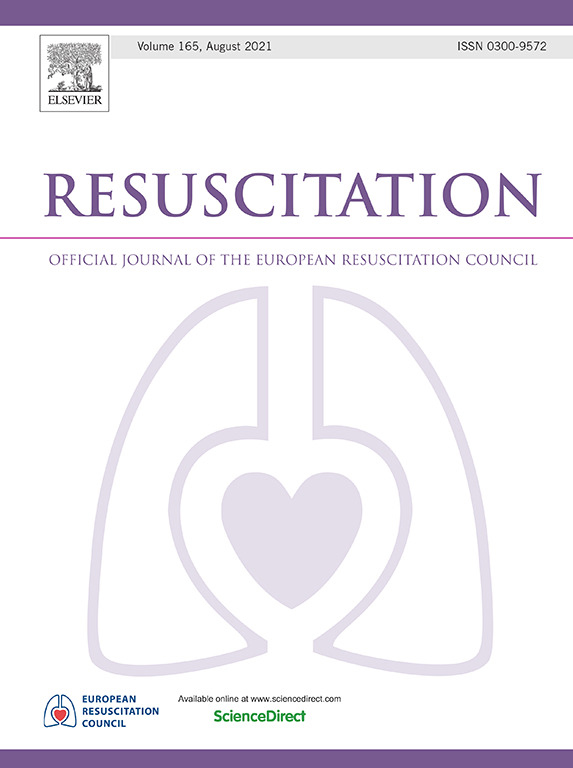Out-of-hospital cardiac arrest secondary to electrocution: Characteristics and outcomes
IF 6.5
1区 医学
Q1 CRITICAL CARE MEDICINE
引用次数: 0
Abstract
Aim
To characterise the epidemiology of Out-of-Hospital Cardiac Arrests (OHCA) secondary to electrocution and determine its association with the initial arrest rhythm and patient outcomes.
Method
Between 2000 and 2023, we retrospectively compared OHCA secondary to electrocution with medical and other non-medical aetiologies. Multivariable logistic regression was used to assess the risk-adjusted odds of presenting in a shockable rhythm and patient outcomes.
Results
Of the 118,677 OHCA cases included in the study, 113 (0.1%) were secondary to electrocution. The crude incidence was 0.11 per 100,000 person-years, reducing significantly over time (p <0.001). Electrocution cases were more likely to be male, occur in a workplace, and present in a shockable rhythm compared to medical and non-medical causes. After adjustment for arrest characteristics, the odds of presenting in a shockable rhythm were similar between electrocution and medical causes (AOR 1.08, 95% CI: 0.59, 2.01; p = 0.790) but lower for non-medical causes (AOR 0.07, 95% CI: 0.04, 0.14; p <0.001). Electrocution had higher unadjusted odds of survival to hospital discharge when compared to medical causes (OR 0.21, 95% CI: 0.21, 0.80; p = 0.009) and non-medical causes (OR 0.20, 95% CI: 0.10, 0.39; p <0.001), but this was not significant after adjustment for differences in arrest characteristics.
Conclusion
Electrocution cases had a similar likelihood of presenting in a shockable rhythm to medical causes. Electrocution was not an independent predictor of survival, with favourable prognosis appearing to be attenuated by other factors, including younger age and a higher proportion of initial shockable rhythms.
院外继发于电刑的心脏骤停:特征和结果。
目的:了解院外心脏骤停(OHCA)继发于电刑的流行病学特征,并确定其与初始骤停节律和患者预后的关系。方法:回顾性比较2000年至2023年期间,电刑继发OHCA与医疗和其他非医疗原因。采用多变量逻辑回归来评估经风险调整后出现震荡性心律的几率和患者预后。结果:在纳入研究的118,677例OHCA病例中,113例(0.1%)继发于电刑。原始发生率为0.11 / 100,000人年,随着时间的推移显著降低(p结论:电刑病例与医学原因有相似的可能表现为休克节律。电刑并不是一个独立的生存预测指标,良好的预后似乎被其他因素削弱,包括年轻和较高比例的初始电击节律。
本文章由计算机程序翻译,如有差异,请以英文原文为准。
求助全文
约1分钟内获得全文
求助全文
来源期刊

Resuscitation
医学-急救医学
CiteScore
12.00
自引率
18.50%
发文量
556
审稿时长
21 days
期刊介绍:
Resuscitation is a monthly international and interdisciplinary medical journal. The papers published deal with the aetiology, pathophysiology and prevention of cardiac arrest, resuscitation training, clinical resuscitation, and experimental resuscitation research, although papers relating to animal studies will be published only if they are of exceptional interest and related directly to clinical cardiopulmonary resuscitation. Papers relating to trauma are published occasionally but the majority of these concern traumatic cardiac arrest.
 求助内容:
求助内容: 应助结果提醒方式:
应助结果提醒方式:


